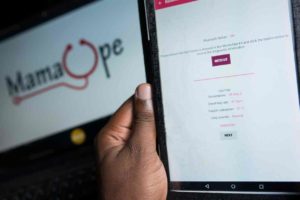
Ugandan graduate Brian Turyabagye was studying engineering when his friend’s grandmother fell seriously ill. Accompanying her to hospital, he watched as doctors diagnosed malaria and prescribing various treatments accordingly. Only as she lay dying did they realise their initial diagnosis was wrong. It was pneumonia that was killing her.
Turyabagye, 24, was so shocked by the circumstances surrounding the death that he began researching methodologies for diagnosing pneumonia and its treatments. To his surprise, he discovered that the illness affects far more children than it does adults. According to Unicef, pneumonia kills half a million children under five in sub-Saharan Africa every year, with the region accounting for half of all global deaths from pneumonia of children under five.
“Many of those deaths are because of misdiagnosis,” says Turyabagye. “In the villages and remote areas, children get sick – and the first reaction is to treat them for malaria. Most people are aware of malaria, and the signs for malaria and pneumonia are very similar, so it is difficult for health professionals to differentiate.”
Even when a correct diagnosis is made, treatment is often unavailable. According to the Uganda Paediatrics Association, fewer than 20% of children with pneumonia receive antibiotics, which cost less than $1 (81p).
So Turyabagye began designing a biomedical smart jacket that would distinguish pneumonia’s symptoms – temperature, breathing rate and sound of the lungs – and eliminate most human error, diagnosing pneumonia at a rate three to four times faster than a doctor.
He named it “Mamaope”, or “mother’s hope” – a reference to the 27,000 children who die of pneumonia in Uganda every year.

“We focused on the distinguishing signs of pneumonia,” says Turyabagye. “One of the processes that most doctors use is a stethoscope to the check the lungs. But [pneumonia] tends to be on side points around the body, not just in the chest or back. Its accuracy of being able to diagnose what is healthy, and what is not, is very encouraging.”
Currently a prototype, the Mamaope jacket will undergo an official national medical examination in January. Certification for use in health centres and hospitals is expected by spring.
The jacket could be a major boon to diagnosing, treating and preventing pneumonia in sub-Saharan Africa. Despite international progress tackling measles, HIV and Aids and tetanus, funding towards eradicating pneumonia remains extremely low: for every dollar spent on global health in 2011, Unicef says, only two cents went to pneumonia.
“Although sub-Saharan Africa accounts for half of pneumonia deaths among children under five worldwide, funding for pneumonia prevention, management and treatment in the region remains low,” according to Mark Young, senior health specialist for Unicef.
“More resources and more commitment at the highest level will bring us closer to stopping this disease from being a major child killer.”
The Mamaope jacket was shortlisted for this year’s £25,000 Africa prize for engineering innovation, and Turyabagye hopes this could jumpstart mass production of the jacket for use across the continent.
“Really, we are looking to help the next generation,” he says. “Pneumonia has such a high rate in Uganda and our neighbouring countries, if we were able to distribute in those countries we could save a lot of people.”

No negativity Please!